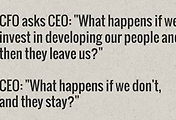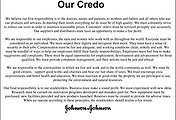Sundo Tea Ceremony: A Reflective Practice for Deep Learning (국선도 행다법).
A tea ceremony is a ritualized form of making tea practiced in the East Asian cultural sphere by the Chinese, Japanese, Korean and Vietnamese tea ceremony. The tea ceremony, also called the Way of Tea (다도, 茶道), is a cultural activity involving the ceremonial preparation and presentation of tea. The manner in which it is performed, or the art of its performance, is called Tea ceremony [Reference 1].
One can also refer to the whole set of rituals, tools, gestures, etc. used in such ceremonies as tea culture. All of these tea ceremonies and rituals contain "an adoration of the beautiful among the sordid facts of everyday life", as well as refinement, an inner spiritual content, humility, restraint and simplicity "as all arts that partake the extraordinary, an artistic artificiality, abstractness, symbolism and formalism" to one degree or another.
Korean tea ceremony is relatively unknown while the Chinese and Japanese tea ceremony are better known. The Korean tea ceremony or Darye (다례, 茶禮) is a traditional form of tea ceremony practiced in Korea. Darye literally refers to "etiquette for tea" or "day tea rite" and has been kept among Korean people for an over a thousand years. The chief element of the Korean tea ceremony is the ease and naturalness of enjoying tea within an easy formal setting.
Central to the Korean approach to tea is an easy and natural coherence, with fewer formal rituals, fewer absolutes, greater freedom for relaxation, and more creativity in enjoying a wider variety of teas, services, and conversation [Reference 2].
This 'focus on natural being' of Korean tea ceremony has stemmed from the combination of multiple spiritual and cultural heritages such as Sundoism (Taoism), Shamanism, Buddhism, and Confucianism. While Korean Buddhism and Confucianism are relatively well-known in the perspective of cultural understandings, the Sundoism is little known. But the Korean authentic Sundoism is the root gene of the Korean culture for more than 9,700 years, and it embraced foreign philosophy and religion like Buddhism, Confucianism, and Christianity [Reference 3].
Sundoism (called Kouksundo, Sundo, Bark-Dol-Beop, Chung-Gak-Do, Hwa-Rang-Do) is a holistic self-development practice system which aims to develop the ultimate physical-strength, the ultimate mental-power, and the ultimate spiritual-enlightenment.
The core feature of Kouksundo practice is "deep abdominal energy center breathing" known as Danjeon (Dol-dan) Breathing which enables the practitioners to breathe in the universal life energy, Ki, into the body. Through the practice, the practitioners are gradually able to accumulate the Ki in the Danjeon and learn how to circulate the Ki throughout the 365 Ki channels in the body, that was opened by Chung-San [Reference 3].
Simply, Sundosim aims to gain ultimate Energy (Ki, 氣) through a special breathing. And the purpose can be achieved through a deep reflective learning by doing.
In this article, the author wants to introduce Sundo Tea Ceremony: A reflective practice for deep learning by interwinding the Sundoism, Nonwestern Learning, and Modern Learning Theories.
Nonwestern learning can be characterized by its 'interdependent, communal, holistic, and informal' approach to learning. While western learning focuses on learning knowledge, nonwestern learning encourage people to have collective, indigenous, and deep learning that emphasizes 'understanding and enlightenment'.
Self-reflection is the core practice in nonwestern learning. In Confucianism, Buddhism, Sundoism, Hindusim, and Sufism, or even in the eastern Christianity heritage, Self-reflection is the essential learning practice to achieve 'deep learning'.
Dewey defined reflective thought as ‘active, persistent, and careful consideration of any belief or supposed form of knowledge in the light of the grounds that support it and the further conclusions to which it tends’ (Dewey 1933: 118). In the modern theory of learning, self-reflection is descried as an important human activity in which people recapture their experience think about it, mull it over and evaluate it. Argyris and Schön (1978) proposed two levels of learning: single-loop-learning & double-loop-learning. Argyris and Schoen described
When the error detected and corrected permits the organization to carry on its present policies or achieve its presents objectives, then that error-and-correction process is single-loop learning.
Single-loop learning is like a thermostat that learns when it is too hot or too cold and turns the heat on or off. The thermostat can perform this task because it can receive information (the temperature of the room) and take corrective action. Double-loop learning occurs when error is detected and corrected in ways that involve the modification of an organization’s underlying norms, policies and objectives [Reference 4].
Single-loop learning occurs when an individual/organization conducts a Reflection-in-action. The individual reflects their routine job or action, and tries to reduced the gap between purpose and outcome. Then retune his/her behavior/mindset/cognition to reduce the gap. On the other hand, an individual/organization should ask a question about fundamental assumptions or predefined norms when the single-loop learning cannot resolve the gap.
The work of Chris Argyris (1923-2013) describes the concept of double-loop learning (DLL) in which an individual, organization or entity is able, having attempted to achieve a goal on different occasions, to modify the goal in the light of experience or possibly even reject the goal.
In both single-loop-learning and double-loop-learning, the reflection is the core practice for learning.
There are many tea ceremony practice methods that encourage people to have a reflection moment. Sundo Tea Ceremony focuses on "Reflection in Life-Span" in order to search and tune a life meaning, goal, or mission.
The necessary equipments for practicing Sundo Tea Ceremony are 'tea', 'tea pots', 'warm water', and a 'self-being'. No more no less. There is no fixed or sophisticated rules or manners to conduct a Sundo tea ceremony, and try to feel freedom of being.
If one is experiencing a significant 'disoriented life dilemma', write it down on a paper and put it aside. Then forget it during a tea ceremony.
In Sundoism, there are nine levels of physical/mental/spiritual enlightenment.
First three levels (1~3) represent physical enlightenment.
Next three levels (4~6) represent mental enlightenment.
Final three levels (7~9) represent integration of physical and mental enlightenments to evolve a higher level spiritual enlightenment.
Replicating the nine levels of enlightenment levels, tea ceremony participant enjoys nine cups of tea that represent the age stages.
At the beginning, wash a tea leaf. This is a replication of wash a new born baby. In Buddhism and Christianity, there is a special ritual of 'Washing the new born Buddha or Washing the New born Jesus'. We must welcome a holy divine 'self' to a new world by washing tea leafs with warm water.
Put warm water (160 ~ 180 degree F or 70~80 degree Celsius) on a tea pot, and wait for three minutes with deep breathings. Please do practice, 'think without thinking' but focus on 'breathing'. And try to feel fragrance, color, and taste of each cup of tea. You may feel...
1. Age 1-9: Strong fragrance, color, and Bitter taste like a kid's experiencing.
2. Age 10-19: Strong fragrance, color, and strong taste like a teenager.
3. Age 20-29: Full flavor of tea like early adult.
4. Age 30-39: Matured fragrance, color, and mild taste like thirties.
5. Age 40-49: Stable fragrance, color, and taste but emergent of a new energy.
6. Age 50-59: Mild fragrance, color, and taste but strong energy.
7. Age 60-69: Very balanced fragrance, color, and taste with a fulfilled energy.
8. Age 70-79: A subtle feeling of harmonization of fragrance, color, and taste.
9. Age 80 ~ : Feeling of 'energy' fulfillment without Fragrance, color, and taste.
One can put a dried flower (e.g. Chrysanthemum, Cherry blossom) to experience a 'transformation' in the fifth or sixth cups of tea (age 40s or 50s). This transformation replicating a significant 'life meaning change' in those ages. Many people changes their meaning of life in their age of 40s~50s and fundamentally changes their life style in order to explore a new life meaning. As such, one can experience a 'transformation' of tea through putting a flower (a transformational moment) on the tea pot.
If you put aside your 'disoriented life dilemma', read it, feel, and decide one immediately just after ending the final cup of tea without thinking. You may feel 'emergent solution' without a reason. That is the answer (called it Kakjingwan, 각진관수련, see http://leadershipcenter.tistory.com/336)
Throughout the feeling of nine stages of life with enjoying nine cups of tea, an individual can reflect and anticipate 'meaning of life'. And this opportunity give a person to tune a life goal, which is a 'deep learning'.
No word is necessary!
Feel something good?
That's the deep learning.
References:
1. Tea Ceremony: http://en.wikipedia.org/wiki/Tea_ceremony
2. Korean Tea Ceremony: http://en.wikipedia.org/wiki/Korean_tea_ceremony
3. Definition of Kouksundo: http://sundoacademy.tistory.com/entry/What-is-the-Definition-of-Kouksundo-Sundo
4. Chris Argyris: theories of action, double-loop learning and organizational learning: http://infed.org/mobi/chris-argyris-theories-of-action-double-loop-learning-and-organizational-learning/
5. Reflection: http://infed.org/mobi/reflection-learning-and-education/
국선도 행다법 한글 요약:
국선도 수련체계는 몸, 마음, 그리고 심신 통합의 정각도, 통기법, 선도법에 각각 세단계씩 총 아홉단계로 되어있습니다.
이러한 총 아홉단계에 맞추어 행다(行茶)를 합니다.
먼저 차를 넉넉히 다관에 넣고 먼저 끓인 물을 숙우로 나누어 담고 한소끔 식힌 후 (70-80도) 약 1분간 찻잎을 씻어냅니다. 그리고 아홉차례에 걸처 차를 우려냅니다.
각 잔을 마실 때는 향, 색, 미의 변화를 깊게 느끼면서, 아래와같이 나이에 따라 스스로가 변해가는 것에 대해 깊은 숨을 쉬면서 성찰하도록 합니다.
첫째잔: 1-9세 : 매우 강한 향, 색, 미는 어릴 적 생동하는 기운을 뜻합니다.
둘째잔: 10-19세: 조금 강한 향, 색, 미는 10대의 발랄하지만 설익은 기운을 뜻합니다.
셋째잔: 20-29세: 제대로 우러난 향, 색, 미는 20대의 만발한 기운을 뜻합니다.
넷째잔: 30-39세: 부드럽고 깊어진 향, 색, 미는 30대의 성숙한 기운을 뜻합니다.
다섯째잔: 40-49세: 향, 색, 미는 옅어졌지만 완숙함에서 오는 기운이 드러납니다.
여섯째잔: 50-59세: 향과 색은 많이 없어졌지만, 깊은 참맛이 느껴집니다.
일곱째잔: 60-69세: 향, 색, 미는 미미하지만 완전히 조화되어 참기운이 느껴집니다.
여덟째잔: 70-79세: 향, 색, 미는 거의 없으나 조화된 큰 기운이 느껴집니다.
아홉째잔: 80-89세: 향, 색, 미는 이제 의미가 없고 오직 하늘과 땅과 사람이 온전히 하나된 기운만이 느껴집니다.
사람의 일생 중, 40대나 50대에 큰 삶의 전환을 겪는 경우가 많습니다. 이와같이 인생의 큰 전환을 느끼기위해 다섯째나 여섯째 잔을 우려낼 때, 매화/국화/장미 등의 말린 꽃을 넣기도 합니다.
이와같이 아홉단계의 행다(行茶)를 하면서 깊은 돌단자리 숨쉬기와 더불어 오직 차를 즐기는데만 오롯이 집중하는 것이 국선도의 행다법입니다. 이를통해 인생의 의미와 목적 그리고 어떻게 살아갈 것인가를 깊이 성찰하고 깊은 수준의 깨달음과 배움을 얻고자 하는 것입니다.
2014년 5월 10일
최정환
'Meditation on Leadership > Meditation on Leadership' 카테고리의 다른 글
| Why do we need to invest in people development? 왜 인재개발에 투자해야하나? (0) | 2014.05.21 |
|---|---|
| Leader like a tiger (범같은 리더란...)? (2) | 2014.05.16 |
| Johnson & Johnson's secret of being sustainable growth for 100+ years (0) | 2014.03.29 |
| Meditation on A. Lincoln's Leadership (0) | 2014.02.25 |
| Meditation on Big Data (Clean up mind, first) (0) | 2014.01.17 |












댓글